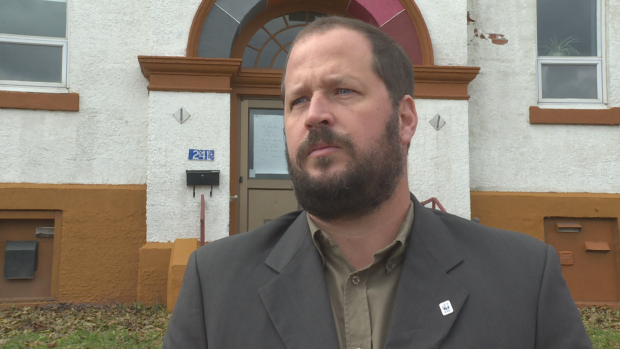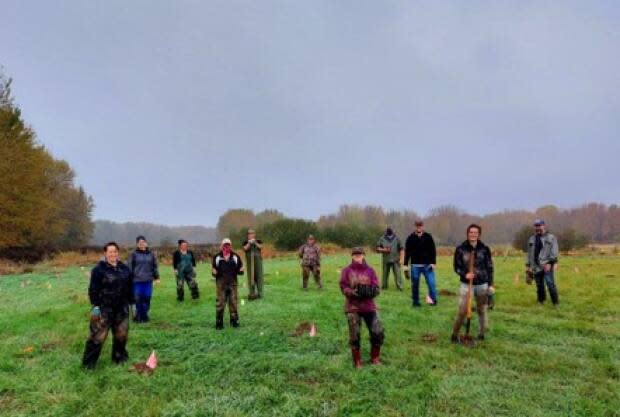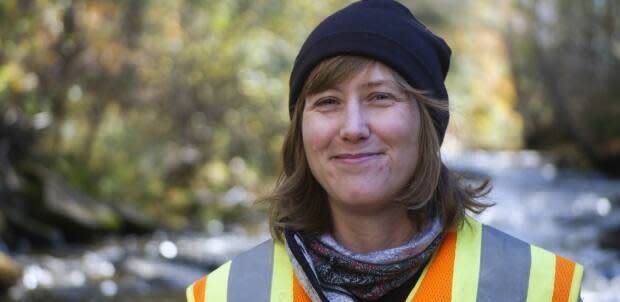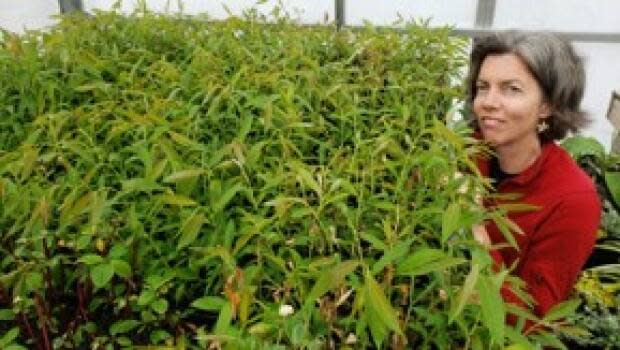Tree planting can reduce flood risk, say wildlife and watershed groups

The spring melt is winding down on the St. John River and so far there's been no major flooding.
The Public Safety Department reports the river is well below flood stage and the five-day forecast calls for levels to continue to drop.
Experts in river restoration say there's a way to increase the chance future freshets will go smoothly, too.
Simon Mitchell of the World Wildlife Fund and Natalie Deseta of the Nashwaak Watershed Association say planting trees, shrubs and grasses along the river and its tributaries can help reduce the risk of bad flooding in spring and from extreme rain events.
"When we're thinking about flooding," said Mitchell, "our biggest issue is the frequency and intensity at which these events come."
Mitchell is a habitat specialist who studies the St. John River and a vice president with the Canadian WWF based in the Nackawic area.
"We need to do everything we can to hold the water on the landscape," he said, "whether it's trees or wetlands which act as a sponge and then slowly release that water."
Mitchell commends groups like the Kennebecasis Watershed Restoration Committee and the Nashwaak Watershed Association for the work that they have been doing.

Volunteers and staff have planted thousands of maples on the lower 70 kilometres of the Nashwaak River in the last several years, along with native grasses and shrubs such as willows and alders.
"The silver maple is a really great candidate for mitigating the effects of flooding," said Deseta.
She's the restoration and outreach coordinator for the Nashwaak Watershed Association and has an academic background in geology and environmental science.
"On a hot summer day a mature silver maple can take up to 220 litres of water per hour," Deseta said.
"They really love water."
"Their entire life cycle is actually centred around the flooding process."

Trees are planted upland within the river terrace, said Deseta.
Willows and alders are planted right on the bank where they come in contact with the river.
They're "really great for handling the flow of water," she said.
"They're bendy and they're able to go with the flow and dissipate the force of flood waters."
The varieties of native willow shrubs include red tipped and sandbar.
Native grasses have very deep roots, she said, and are able to hold the river bank together and stop it washing away.
As of the start of this year, said Deseta, 14,093 trees had been planted, 25,998 shrubs, and 4,958 acorns along over 46.6 km of shoreline.

The Nashwaak is one of many rivers in the province whose banks have been cleared of trees for agriculture or by homeowners wanting a view.
In northern parts of the river, bur oak and red oak would be more common than silver maple in the riparian corridor, said Mitchell.
"We've got 32 native trees here in New Brunswick and in the right place at the right time they can help us bend the curve on climate change and biodiversity loss."
Mitchell said the WWF is partnering with other conservation groups and municipalities on a number of restoration projects.
"We need to be doing it in a lot more places throughout the Wolastoq watershed," he said.
"We could look at every tributary," he said, naming the Meduxnekeag, the Kennebecasis, the Tobique, the Oromocto, and the Hammond.

Restoration is not as simple as just planting, said Deseta.
Floodplain plantations require ongoing maintenance, she said.
The hay has to be mowed year after year so it doesn't crowd out the saplings.
She hopes private homeowners will still find river restoration worthwhile, for the sake of being good stewards and preventing property damage.
While there are regulations against cutting trees within 30 metres of a river without a permit from the province, Deseta said homeowners considering it should rethink the idea.
Property owners may see damage almost immediately after trees are cut and replaced with something like turf, she said.
"The ground is no longer able to draw down precipitation or flood waters. You'll get pooling on your property pretty badly within the first five years. And over time the river will adjust and start to scour away the riverbank at potentially quite a high rate."
"In some areas in the watershed we're talking up to half a foot a year in a bad year of flooding."
A minimum of five metres of trees and vegetation is required along a river, said Deseta, to mitigate the effects of water quality degradation, erosion and flooding due to the clearing of forest.
Planting along the rivers doesn't just help people, Mitchell said. It's also good for everything that lives in and along the water, from river otters and birds to fish.
Vegetation on river banks stops sediment from getting into the water and harming aquatic life, he said, and it also creates shade to keep cold water species such as salmon cool and alive as water temperatures rise.
"We can't move fast enough," Mitchel said, "to combat the combined crisis of climate change and biodiversity loss."

